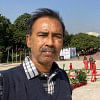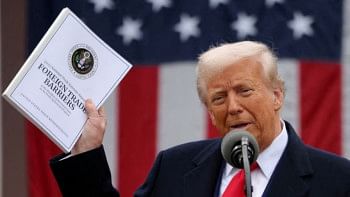Proposed industrial policy brings in reforms
Two new sectors -- high-priority industry and creative industry -- will be included in the proposed industrial policy, for which the government will provide financial and policy support.
The industries ministry has drafted the five-year Industrial Policy 2016 and will soon place it at a meeting of the cabinet committee on economic affairs for approval. It will replace the Industrial Policy 2010.
In the existing policy, there is a list of priority industries but the proposed industrial policy contains a list of high-priority industries.
The industrial policy, in its definition, said the high priority industries are those sectors that create large-scale employment through quick expansion and earn substantial amounts of export revenue.
These industries will get priority in receiving government incentives for rapid development.
Six industries have been included in the high priority category: agriculture and food processing, garment, ICT and software, pharmaceuticals, leather and leather products, and jute and jute goods.
Creative industries have been defined as the sectors producing aesthetic and creative products by using artistic and innovative thinking and techniques or modern technology. These include architecture, art and antique, design, fashion design, film and video, interactive laser software, software, and computer and media programmes.
A plan is underway to map out the creative industries across the country, according to the proposed policy. The government will provide policy and institutional support for the expansion of these industries.
In the industrial policy of 2010, specific tax benefits for under-developed and priority sectors were mentioned but the proposed policy said the tax facility will be given as per the existing customs, VAT and income tax laws.
The priority sectors and sub-sectors will get timely and separate investment incentives, according to the new policy. Bangladesh Bank, National Board of Revenue, Board of Investment and other related agencies will take the necessary steps.
Specific investment incentives, including subsidies, tax and duty rebate, have been proposed for the areas falling behind economically and in industrialisation.
The proposed policy has redefined the sizes of industrial units. For example, a company with asset value of over Tk 50 crore and 300 employees will be deemed as a large industrial unit, which is Tk 30 crore and 250 respectively now.
However, if a garment unit has a staff of more than 1,000, it will fall in the big industry category.
Bangladesh Bank has recommended the inclusion of annual turnover in the definition, which will bring down the facilities enjoyed by the companies.
A company with annual turnover of over Tk 300 crore should be counted as a big industrial unit, according to the BB proposal. For a mid-sized company, it would be between Tk 100 crore and Tk 300 crore. A small unit will have Tk 20 crore in annual turnover and micro and cottage industrial units below Tk 5 crore.
In an effort to reform state-run companies, the new policy made several proposals: increasing private involvement in the loss-making state enterprises is one of them.

 For all latest news, follow The Daily Star's Google News channel.
For all latest news, follow The Daily Star's Google News channel. 



Comments